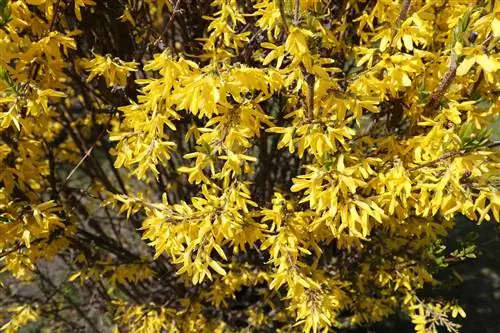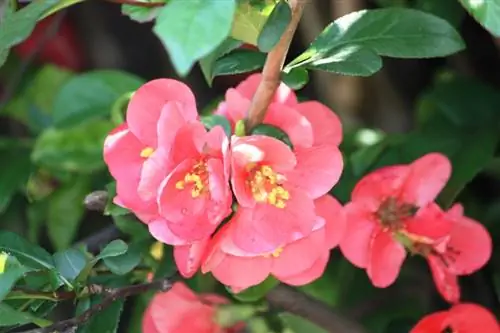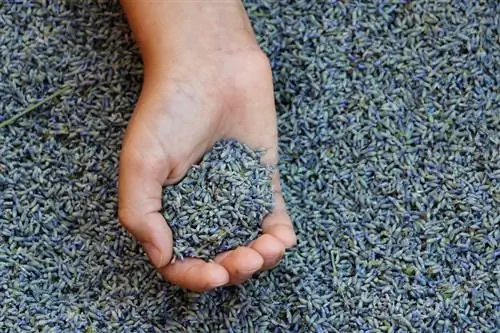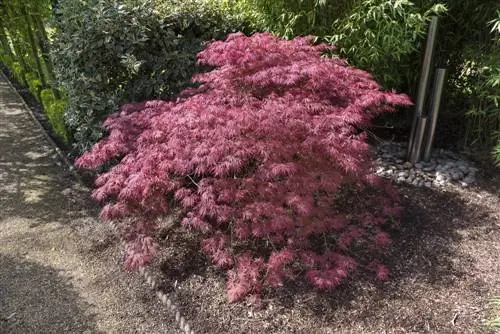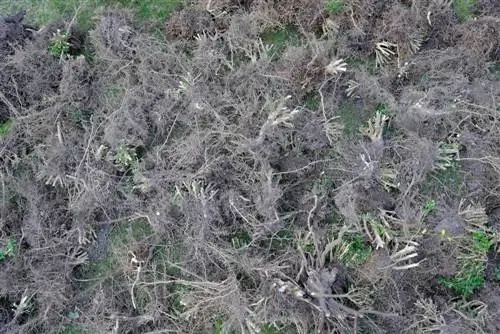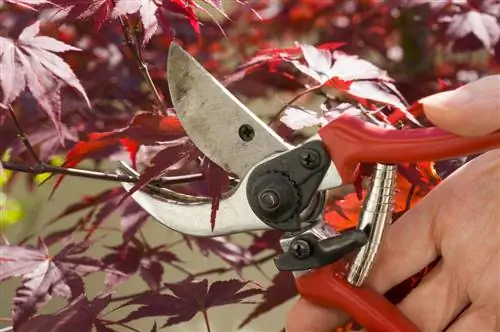- Author admin [email protected].
- Public 2023-12-16 16:46.
- Last modified 2025-10-04 22:19.
The yellow flowers of forsythia are simply part of spring for many garden lovers. But bushes that are cut too rarely or are too old often no longer grow well, only bloom sparsely and then have to be felled.
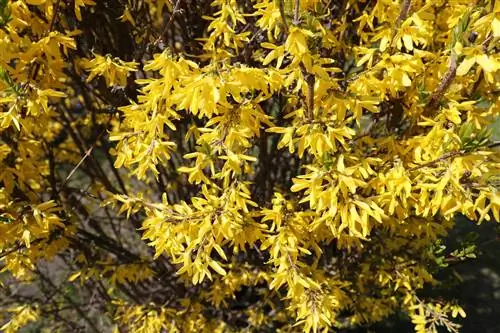
How do I remove a forsythia?
First, allbranches are cut backand theroot ball are dug out. Forsythia, which is a flat-rooted plant, can sprout again and again from root residues. Therefore, pull even small parts of the storage organs out of the earth very carefully.
How do I cut back forsythia before removal?
Cut allbranches just above the ground so that you can better dig out the root ball.
- You can simply cut thinner forsythia branches with pruning shears or secateurs.
- For thick, older branches, use a saw to cut through the wood close to the ground.
- Since all parts of the plant are slightly poisonous, it is recommended to wear gloves when carrying out this work.
How do I remove the forsythia root ball?
Before you can remove theroot networkof the forsythia, it must becompletely dug up. In addition to a spade with a sharp edge and a saw, this requires some patience and muscle strength:
- Dig a trench around the root ball.
- Expose all root parts.
- Cut thin roots with a spade or scissors and pull them out of the ground.
- Saw off thick roots and pry them out.
When can I remove the forsythia?
Thebest timefor removing forsythia isAutumn. Then you can be sure that you are not disturbing any birds that are in breed the forsythia. You can also dig up the bushes at the beginning of winter as long as the ground is not frozen.
Are forsythia branches and roots allowed in the compost?
Since the toxins of the forsythiathroughthemicroorganismsin thecompostcompletelydegraded, the removed bush can be easily composted. To prevent rotting from taking too long, thinner branches should be cut into small pieces with secateurs. Chop up thicker branches with a chipper.
Tip
Forsythia only produces “dry” flowers
Despite their splendid flowers, forsythia provide no usable food for bees and other insects, because the bright bells of the hybrids cultivated in our gardens produce neither nectar nor pollen. Only the variety “Beatrix Farrand” produces at least some pollen and therefore has a certain benefit for the animals.

